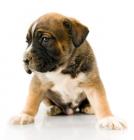Boxer

In my own words
The dog that never grows up, that’s me. The ‘Peter Pan’ of the dog world, an eternal kid with a good heart. Like an adolescent child I will need consistent training, as my curiosity will certainly kill the cat. Always longing for a cuddle and will wiggle into any space just to be close to my loved ones, but that’s after a few hours of play please!
Do you know that my kind springs from a line of dogs known throughout the whole of Europe during the 16th century and is one of many descendants of the old fighting dog of the high valleys of Tibet?
At my best I’m a well-conditioned middleweight athlete of dogdom, an instinctive guardian, but most of all love to be with my people. This has allowed me to succeed as couriers during wartime and as seeing-eye dogs for the blind. My predecessors include the Bullenbaisser mastiff (“bull-biter”), a stocky German breed used to chase, catch and hold fierce wild game, including boar, bear and bison.
True to my name, we actually do stand on our hind legs and bat our front paws.
Get two of us together that like each other and eventually we will get up on our hind legs and box.
I do require plenty of attention, exercise and supervision. But in return, I will reward you with a lifetime of companionship. I also have a reputation for being loyal and protective, particularly around little ones, so the perfect babysitter for you.
My ideal owner(s)
Active
Families with children
High-level energy
Happy
High Spirited
Good sense of humour
What they say about me
Clownish
High Spirited
Outgoing
Energetic
Intelligent
Headstrong
Courageous
Is this Boxer for you?
Test your knowledge about the Boxer
Information essential about the Boxer
Breed Group – Working Dog -
SIZE
Males stand between 57-63 cm. Weight 30-32 kg, and females stand between 53-59cm and weigh around 25-27 kg.
Popularity:
In 1894, three Germans named Roberth, Konig, and Hopner decided to stabilize the breed and put it on exhibition at a dog show. This was done in Munich in 1895, and the next year they founded the first Boxer Club.
The breed became known in other parts of Europe in the late 1890s. Around 1903, the first Boxers were imported into the U.S. The American Kennel Club registered the first Boxer in 1904. When Word War I broke out, Boxers were enlisted into the military, serving as messenger dogs, carrying packs, and acting as attack and guard dogs.
Boxers started becoming popular in the U.S. in the 1940s when soldiers coming home from World War II brought their Boxer mascots with them. Through them, the breed was introduced to more people and soon became a favorite companion animal, show dog, and guard dog.
The American Boxer Club (ABC) was formed in 1935 and gained acceptance by the AKC in the same year. In the early days, there was a lot of controversy within the club about the Boxer standard. In 1938, the club finally approved a new standard. The latest revisions of the standard were in 2005. Today, the Boxer ranks 7th among the 155 breeds and varieties registered by the AKC
Breed History:
In the 1850s, a Bulldog (which actually resembled a small Mastiff) was exported from England to Munich. Years later, early Boxer fanciers used descendants of that Bulldog and the German Bullenbeisser to form the foundation of the modern breed, which was developed to be smaller and lighter than its predecessors. For a period of time, European Boxers probably were used in bull baiting – a betting-man’s “sport” that eventually was outlawed. In 1894, three Germans took steps to stabilize and exhibit the breed, which they did in Munich in 1895 for the first time and thereby brought Boxers to widespread prominence. The following year, the first German club devoted to the breed was founded as the Deutsche Boxer Club of Munich. The initial German breed standard was adopted in 1902, but was vigorously debated for several years by rival Boxer breeders and clubs.
The source of the breed’s name is uncertain, although some fanciers speculate that it was coined by an Englishman in reference to the characteristic sparring gestures made with its front legs during play, that remain a hallmark of this breed. Other theories concerning the origin of the name “Boxer” include: 1) that it is a corruption of “beisser,” which means “biter”; 2) that it is a corruption of the word “boxl” or “boxeln,” which were nicknames for one of the Boxer’s ancestors, a now-extinct breed called the Brabanter; and 3) that it was coined simply because the dogs were “prize fighters”
It was one of the first breeds to be employed as a police and military dog in Germany and by the 1900’s it had become a fully established breed as a general utility dog, also a family pet and even a show dog. Now found to be Americas top four most popular breeds.
Character:
The character of the boxer is of the greatest importance and demands the most careful attention. He can be described as a ‘hearing’ guard dog, meaning he is very alert and watchful, that’s when he’s not clowning around for you, he is dignified and self-assured. He is renowned from olden times for his great love and faithfulness to his master and household, his alertness and by far his fearless courage as a defender and protector. The boxer can be rather docile at times, but watch for his distrust in strangers. But by far a bright and friendly kind in play, and brave and determined when roused. His intelligence and willing tractability, his modesty and cleanliness makes him a highly desirable family dog and cheerful companion. Never false or treacherous even as an old man.
Temperament:
The boxer is a high energy, extremely playful, exuberant dog. With it’s attentive, devoted and outgoing nature makes for a perfect companion for the family household. Although sometimes stubborn he has a sensitive side, enough to be responsive to commands and intelligent enough to make sense of it all. Being an athletic, energetic type he also shows a very sweet, caring side and known for his way with children. Despite their history of being used for dog fighting, boxers are typically very gentle creatures and sometimes quite goofy and a clumsy appeal with huge puppy dog eyes. Their temperament is affected by a number of factors, including heredity, training and socialization. Pups with nice temperaments are curious and playful, willing to approach people and be held by them.
Conformation:
The boxer is a medium to large sized, study, smooth haired dog of a stocky, square figure and very strong limbed. A compact build resulting in a powerful breed, but equally as elegant and nimble. He is an exemplary breed in this combination- stylish elegance with strength and agility, his stride is free and ground covering, with a proud carriage. With a distinctive head, broad and blunt muzzle and alert expression and a shorthaired silky coat makes him perfect suitor to serve as a working watchdog.
Colour:
Brindle, Fawn, and White. (Although white is actually an increased amount of flash- which is the white patches on the other colour options)
Training:
Because of their tendency to be hyperactive and unruly it’s essential to start intensive training as early on. Simply down to their big loving personalities they love to jump in on everything and be the center of attention, this is easily refrained if necessary. Their high level of energy and physiques make significant daily training, a lot of mental stimulation is essential for a well-balanced dog. Early socialization as well as training is critical as can become a real handful, and for you yourself to have an almost equal level of energy can help the relationship. Exposure to people and dogs ensures they grow up to be a well-balanced, outgoing and friendly dog. Due to their size and strength if its not direct well it can lead to clumsy accidents, they need to learn how to direct control and become the best they can.
Getting him to take training seriously requires starting early and using firm, fair training methods and positive motivation in the form of praise, play, and food rewards. Be consistent. Your Boxer will notice any time you let him get away with something, and he'll push to see what else he can get away with. Before you head to training class, settle him down a little with an energetic walk or play session. He'll focus better once he's got his ya-yas out. Leadership should be shown with confidence. Boxers will take advantage of anyone who gives them even the slightest bit of leeway. Positive reinforcement and treats are the best method for training this breed, and harsh tones and discipline should be avoided.
Once leadership roles have been established, Boxers can excel in advanced obedience and often benefit from agility training.
Patience is the key to housetraining your Boxer. Some are housetrained by 4 months of age, but others aren't reliable until they're 7 months to a year old. Take your Boxer out to potty on a regular schedule and praise him wildly when he does his business outdoors. Crate training is recommended.
Care:
Boxers are housedogs. Their short noses and short coats make them unsuited to living outdoors, although they'll enjoy having a fenced yard to play in. Boxers love to play. To keep their muscles toned and satisfy their need for exercise, plan on playing with them or walking them at least twice a day for half an hour. Play fetch, take him for long walks, or get him involved in dog sports such as agility or fly ball. Giving your Boxer plenty of daily exercise is the best way to ensure good behavior. A tired Boxer is a good Boxer.
Although they are large you would assume they need to be outdoors, but actually this breed are definitely not. Their short noses and short hair make them very uncomfortable in hot and cold weather, so are ideally better off as household dogs.
The Boxer's short coat is relatively no-fuss. They are clean dogs that groom themselves, much like cats do. Weekly brushing will keep their year-round shedding under control and occasional wipes with a chamois cloth will keep the coat shiny. Boxers only need to be bathed as needed, which usually means once every three or four months.
It is suggested that Boxers get their teeth brushed on a weekly basis to keep tartar, gum disease and bad breath at bay.
Health:
The average life span of the Boxer is 11 to 14 years. They are not particularly well suited to living in climates with temperature extremes. Boxers historically had cropped ears and docked tails, although the AKC standard permits both cropped and natural ears without preference. Undocked tails are still severely penalized in the American breed standard.
Boxers are unfortunately prone to a number of health conditions, some which are genetic in origin with some devastating consequences. So it is very important that your breeder is one that breeds only properly health tested stock. The boxer is prone to several serious genetically inherited health issues such as Aortic stenosis, boxer cardiomyophy and hip dysplasia. White boxers are also very prone to being blind.
You may also like:
Boxers looking for a home in UK »

 (Interest Shown)">
(Interest Shown)"> (Interest Shown)" class="overviewimg"/>
(Interest Shown)" class="overviewimg"/>
 (Interest Shown)">
(Interest Shown)"> (Interest Shown)" class="overviewimg"/>
(Interest Shown)" class="overviewimg"/>
Boxers and their owners »

If you like Boxers, you may be interested in breeds of the same size »
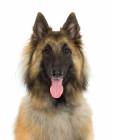

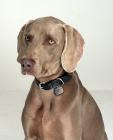
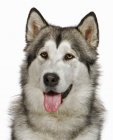

If you like Boxers, you may like other breeds with similar characteristics »
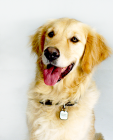
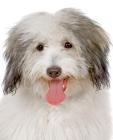

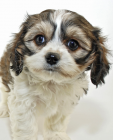

If you like Boxers, you may be interested in these other working dogs »

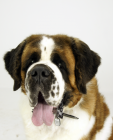

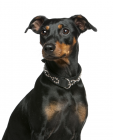
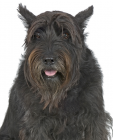
Advice on choosing your breed »
Find an animal shelter or rescue home where a Boxer is waiting for a new home »
Boxers aren’t for everyone but if you like a big dog who loves a cuddle, doesn’t mind a little drawl between friends, wants a dog that will delight you with his curiosity and clownish antics, yet gentle and guiding with your children. Most of all prepare and capable to fulfill all his physical and mental needs then it sounds like he is the right dog for you.
Be the first to rate this breed »
|
*PLEASE NOTE: All our breed profiles are general, and all dogs are individuals. Always talk to the breeders and meet the owners you are buying from. Try to meet the dog and its parents if it is a puppy in their home environment.










